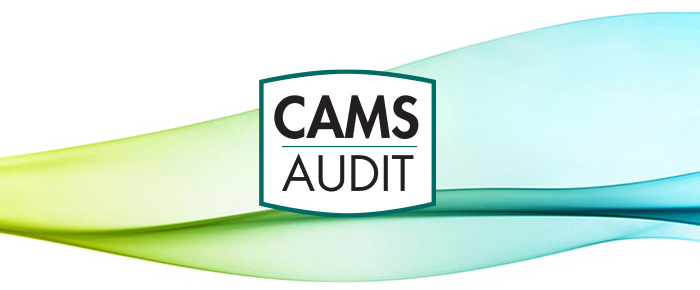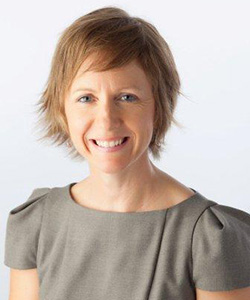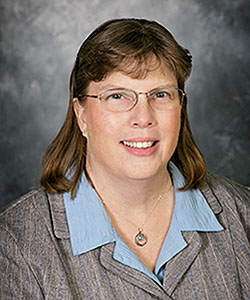
In the spring of 2013, ACAMS introduced the Advanced AML Audit (CAMS-Audit) Certification program. The first of its kind in the financial crime industry, CAMS-Audit is designed to build on the expertise of those who are already CAMS certified and bring a higher-level of specialty to their knowledge and skills. As a final assessment, each student was tasked with researching and contributing an approved white paper on the topic of AML Audit, which will be used by the financial crime prevention community to improve their compliance programs. The inaugural classes far exceeded the expectations of the Association; as the white papers started to be submitted, it was clear that these were documents that would leave a lasting impression on the community.
ACAMS Today had the privilege to sit down with three of the first graduates of CAMS-Audit to ask them why they chose the program, their experiences throughout the duration of the course and what the benefits are of becoming a Certified Advanced AML Audit Specialist. Here are three unique perspectives of CAMS-Audit graduates.

Jonathan Estreich, CAMS, CAMS-Audit
Jonathan Estreich is a vice president within the internal audit department at JPMorgan Chase. With over eight years of experience working with financial services firms such as Deloitte Financial Advisory Services LLP and UBS Investment Bank, Estreich specializes in providing anti‐money laundering and counter‐terrorist financing services with a focus on policies, procedures and internal controls, including those relating to transaction monitoring, Know Your Customer initiatives, customer due diligence and risk assessments. By servicing many different financial institutions within the banking sector in multiple capacities, he has accumulated a broad range of industry knowledge and expertise in diverse areas such as global AML compliance and Office of Foreign Assets Control as well as in working with complex product and customer types. He has had considerable involvement in leading, managing and advising on BSA/AML-related matters, including authoring several works with Thomson Reuters Complinet, ACAMS Today, InsideCounsel and Corporate Compliance Insights. Estreich is a Certified Fraud Examiner, Certified Anti-Money Laundering Specialist, Certified Associate in Project Management, and holds an Advanced Anti-Money Laundering Audit designation.
ACAMS Today: What originally inspired you to earn the CAMS-Audit advanced certification?
Jonathan Estreich: The most influential factor was that the design of the program offered two very unique benefits. First, it provided a forum for industry leaders to learn from one another and share first-hand experience. Second, it forced you to delve deeper into your existing AML knowledge base and demonstrate subject-matter expertise through developing a white paper that explored a topic of your choosing.
AT: What was the most valuable part of the CAMS-Audit experience and how did the diversity in backgrounds from the different participants help broaden your view of AML Audit?
JE: I find that when you're in a job function with intense responsibilities and high stakes, it can at times lead to tunnel vision. By its very nature, AML issues are in the spotlight, and often require urgent attention and specialized knowledge. The CAMS-Audit experience provided the opportunity to step back and reflect on this. In this setting you are no longer thinking about AML through the lens of your job function, but as a whole, and from the perspective of your peers. This type of heightened awareness can lead to a better understanding of AML risk.
AT: Your white paper contribution will help guide others in the AML Audit and related areas. What was the topic that you chose for your white paper and did you consider any other topics?
JE: I considered many topics. In fact, 50 percent of the process probably consisted of choosing a direction and articulating the message.
I decided to develop a white paper that offers specific suggestions for how a financial institution's internal audit department can design a firm‐wide AML risk assessment tool that improves the auditor's ability to identify relevant AML risks; sets the foundation for thoughtful and supported risk determinations; and produces results that can assist in the development of an audit plan that satisfies current regulatory expectations.
AT: What piece of advice do you have for those who are considering participating in the ACAMS Advanced Certification programs?
JE: Do it. And commit. You will benefit most if you plan ahead and set aside the time. Unlike many other programs, you have an opportunity to brand yourself and develop a voice that can lead to change. By leveraging the white paper as a tool to connect with the broader AML audience, you can share insight and promote thought leadership—but it requires dedication. To assist with your work, the program offers a strong support network that wants you to succeed. It's well worth it to take advantage of that.
AT: What changes do you foresee in the AML Audit landscape?
JE: You will have to read my white paper for this one.
Read Jonathan's white paper research on building AML Audit Risk Assessment.

Dr. Lisa Bowyer, CAMS, CAMS-Audit
Prior to forming Liberty Compliance and Training, Lisa Martine Bowyer was a member of the management of the Cayman Islands Monetary Authority, and had been a consultant in the Insurance Firms Division of the FSA (U.K.) and manager in the Financial Advisory Services Division of KPMG in the U.K. She is a Certified Anti-Money Laundering Specialist and is ACAMS-Audit certified.
Dr. Bowyer was an academic for nine years with distinguished publications in the field of insurance and regulation. She is a regulatory and compliance professional both in the U.K. and Cayman Islands for over 12 years. She has a high level of understanding of the purpose, risks and models of regulation, international legal and regulatory requirements and the drivers and strategies of financial markets and products. She is also skilled in drafting of inter alia, legislation, other mandatory provisions, guidance, and policies and procedures, with an excellent appreciation of policy determining law and regulation.
ACAMS Today: Why did you choose the AML Audit career path?
Lisa Bowyer: It chose me! I was first an academic specializing in law and regulation and then a regulator. Circumstances led me to becoming an independent consultant and audit is a key service offered.
AT: What was your favorite part of the CAMS-Audit program and most worthwhile?
LB:The residential [live] course was the most valuable. I am a sole practitioner and writer, so researching and writing the white paper was not a new experience. The course, however, gave me an opportunity to work with other professionals with significant experience and yet from many different roles, sectors and sizes of institutions. This helped me a great deal in further developing objectivity and to prepare for all types of audit engagements.
AT: What topic did you choose to contribute for your white paper? Was it the only topic you considered?
LB: My topic was high-risk countries and I selected it on day two of the residential course. Whilst the scope of the paper changed once I started my research, the topic never did.
AT: How do you think the CAMS-Audit designation will help you with future changes to AML Audit?
LB: At the moment there are some differences internationally in the requirement to have an independent AML Audit. Once those are reconciled it is possible that standards for AML audit will be developed and CAMS-Audit professionals will play a valuable role in the development of those.
Read Lisa's AML audit white paper on high risk countries.

Nancy Lake, CAMS, CAMS-Audit
Nancy Lake has nearly a decade of experience in the BSA/AML world. Lake was CAMS certified in 2008 and as part of the inaugural class received her CAMS-Audit certification in 2013. She has served as BSA officer in multiple banks where she successfully set up the entire BSA program. She has conducted bank wide BSA/AML training including board of director training. Lake has experience working with or implementing several automated BSA/AML monitoring systems.
Lake was brought on board at one institution under enforcement action to correct deficiencies in their BSA program. She did this by implementing robust CIP processes, enhancing their reporting and monitoring programs, and developing their Money Services Business (including international money transmitters) CDD and EDD requirements. The enforcement action was lifted in six months. She has experience working with both FDIC and OCC regulators.
She joined ACBB in November 2012 as manager of the consulting arm of ACBB (Compliance Anchor) to utilize her BSA experience and 19 years as an educator to provide assistance to community banks in managing risk and developing sound internal programs and best practices.
ACAMS Today: Why did you choose to earn the CAMS-Audit Advanced Certification?
Nancy Lake: I am in the consulting business to help community banks manage the BSA burden. This burden weighs heavily on all BSA officers especially the ones wearing multiple hats with little or no help to do their job. I wanted to be certified in AML Audit to help community banks evaluate their BSA program and ensure nothing is missed in preparation for their audit.
Since CAMS certification is the premier certification in the BSA/AML arena, I knew that the CAMS-Audit certification would become the premier certification for BSA/AML audit. I wanted the best certification possible to benefit the BSA officers with whom I work.
AT: What sets AML Audit professionals apart from other AML professionals?
NL: AML Audit professionals have a different perspective and role than that of other AML professionals. AML Audit professionals see multiple banks and AML programs and are challenged to critique every aspect of the program based on the risk profile of the bank to prepare the bank for their exam. This gives them a deeper perspective of AML and in a sense makes them the bridge between the AML professional and the examiners.
AT: Why would you recommend earning the CAMS-Audit Advanced Certification to your colleagues?
NL: CAMS-Audit not only gives you the credentials to put after your name that are recognized worldwide, but expands your knowledge, deepens your experience and challenges you to articulate your thoughts in writing via the white paper.
AT: Speaking of the white paper, what was the topic you chose and did anything influence you to choose it?
NL: I chose the topic "What Auditors Should Know and Ask About BSA/AML Software Before a Successful Audit Can Be Conducted." Another CAMS-Audit participant encouraged me to pursue a software paper based on our class discussions and my input, so I never really considered any other topic.
AT: What challenges do you see for AML auditors and what role will CAMS-Audit play in helping to adapt to those challenges?
NL: AML challenges continue to increase due to our constantly evolving mobile banking world and those exploiting it for their own illegal profits. Auditors will have to understand these challenges, the processes that should be in place to mitigate the risks associated with them, and have the ability to evaluate AML programs with fairness and consistency. CAMS-Audit will help to establish AML Audit standards across the globe.
Read Nancy's complete white paper on BSA/AML software.
For more information about the ACAMS' Advanced Certification programs, visit www2.acams.org/advanced
Interviewed by:
Catalina Martinez, advanced certification program administrator, ACAMS, Miami, FL, USA, cmartinez@acams.org
Karla Monterrosa-Yancey, CAMS, editor-in-chief, ACAMS, Miami, FL, USA, editor@acams.org
Phil Sobczak, marketing manager, ACAMS, Miami, FL, USA, psobczak@acams.org










